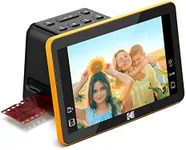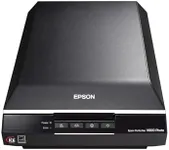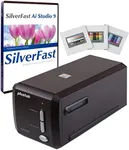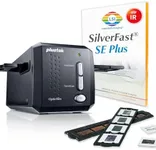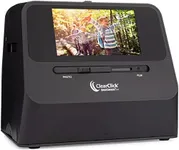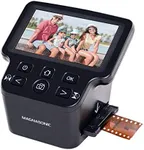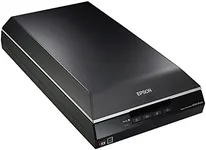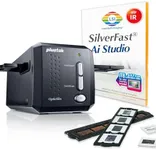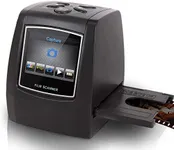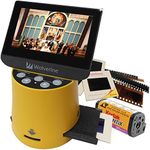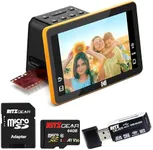Buying Guide for the Best 35 Mm Slide Scanner For Mac
Choosing the right 35-mm slide scanner for your Mac involves understanding your specific needs and the key specifications that will impact your scanning experience. A good slide scanner will help you digitize your old slides with high quality, making it easier to store, share, and edit your photos. Here are the key specifications you should consider when selecting a 35-mm slide scanner for your Mac, along with explanations to help you make an informed decision.ResolutionResolution is measured in dots per inch (DPI) and determines the level of detail the scanner can capture. Higher resolution means more detail and larger file sizes. For general use, a resolution of 2400 DPI is usually sufficient. If you need to capture very fine details or plan to print large photos, look for a scanner with 4000 DPI or higher. Consider your end use: if you are archiving family photos for digital viewing, a lower resolution may suffice, but for professional or high-quality prints, opt for higher resolution.
Color DepthColor depth, measured in bits, indicates how many colors the scanner can capture. Higher color depth results in more accurate and vibrant colors. Most scanners offer 24-bit color depth, which is adequate for most users. However, if you need professional-grade scans with the most accurate color reproduction, look for scanners with 48-bit color depth. Think about the importance of color accuracy in your project: for casual use, 24-bit is fine, but for professional or artistic work, 48-bit is better.
Dynamic RangeDynamic range, measured as Dmax, indicates the scanner's ability to capture details in both the darkest and lightest areas of the slide. A higher Dmax value means better detail in shadows and highlights. For general use, a Dmax of 3.0 is usually sufficient. For professional use or slides with high contrast, look for a Dmax of 4.0 or higher. Consider the quality of your slides: if they have a lot of contrast or you need to capture subtle details, a higher dynamic range is important.
CompatibilityCompatibility with your Mac is crucial. Ensure the scanner is compatible with your Mac's operating system and has the necessary drivers and software. Some scanners come with Mac-specific software, which can make the scanning process smoother. Check the manufacturer's specifications and user reviews to confirm compatibility. If you are using the latest macOS, make sure the scanner supports it to avoid any software issues.
SpeedScanning speed is how quickly the scanner can digitize your slides. Faster scanners save time, especially if you have a large number of slides to scan. Speed is usually measured in seconds per scan. For occasional use, speed may not be a critical factor, but if you have many slides, look for a scanner with faster speeds to improve efficiency. Consider your workload: if you are scanning a large collection, a faster scanner will be more convenient.
Software FeaturesThe software that comes with the scanner can greatly affect your experience. Look for features like dust and scratch removal, color restoration, and batch scanning. These features can save time and improve the quality of your scans. Some scanners come with advanced editing software, which can be useful if you need to make adjustments to your scans. Think about what features are important to you: if you want to minimize post-processing, look for scanners with robust software features.
ConnectivityConnectivity options, such as USB or Wi-Fi, determine how you connect the scanner to your Mac. USB is the most common and reliable connection, but some scanners offer Wi-Fi for wireless convenience. Consider your setup and preferences: if you prefer a clutter-free workspace, a Wi-Fi-enabled scanner might be ideal. Ensure the scanner's connectivity options match your Mac's available ports and your personal workflow preferences.
